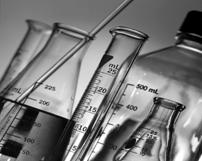Purpose: To determine if the water samples meet Canadian Drinking Water Guideline for Sulphate making a visual comparison of precipitate present. Testing will be done on 4 different water sources, plus a Canadian Guideline Limit.
Materials:
1 – 2 mL Canadian Guideline for Sulphate sample (CGLS) (500 mg/L)
6 – 5 mL vial containing 2 mL of Sulphate Reagent 1
6 – 5 mL vial containing 3 mL of Sulphate Reagent 2
6 - Plastic cups
5 – 2 mL plastic pipettes
50 mL graduated cylinder (not supplied with kit – teacher must supply)
Method:
Label the 6 plastic cups with appropriate number, and name:
#1- Control (Deionized Water or DI)
#2- Urban treated water#3- Rural (Aboriginal and/or non-Aboriginal community) treated water
#4- Untreated raw source water
#5- Local community treated water
#6- Canadian Guideline Limit Sample (CGLS)
Label the 5 pipettes as follows:
#1- Control (Deionized Water or DI)
#2- Urban treated water
#3- Rural treated water
#4- Untreated raw water
#5- Local community treated water.Using a graduated cylinder, measure out 25 mL of Deionized Water to each of the 6 cups.
To the #1 cup, add 2 mL of Deionized Water using the pipette labeled #1 or DI.
To the #1 cup, add contents of one of the Sulphate Reagent 1 tubes.
To the #1 cup while swirling, add contents of one of the Sulphate Reagent 2 tubes. Continue swirling for 1 minute and then set the cup aside.
To the #6 cup, add the 2 mL tube of Sulphate CGLS.
To the #6 cup, add contents of one of the Sulphate Reagent 1 tubes.
To the #6 cup while swirling, add contents of one of the Sulphate Reagent 2 tubes. Continue swirling for 1 minute and then set the cup aside.
Repeat steps 4-6 for cups #2 to #5. Make sure to add the appropriate 2 mL water sample with the appropriate labeled pipette to the matching cup (for example, you will add 2 mL of Urban treated water with the pipette labeled #2 to the cup labeled #2- Urban treated water; and so on.)
Determine the cloudiness of the cups relative to the CGLS and record the results. I.e. Is it less or more cloudy than?
Record Your Results
Results: The CGLS should be cloudy. The water sample may or may not be cloudy. If the water sample is less cloudy than the CGLS cup, then it passes the Canadian Drinking Water Guideline for Sulphate, which is 500 mg/L. The Control should not have any cloudiness present.
Safe Handling of Materials
Caution must be taken at all times when handling any chemicals. Although this test is safe to use in any area, please be cautious with the materials supplied.
Visit the Safe Drinking Water Foundation website www.safewater.org to learn more about issues affecting safe drinking water.
Sulphate:
What is sulphate and why do we test for it?
Sulphur is a non-metallic element that is widely used for commercial and industrial purposes. Sulphur combines with oxygen to form the sulphate ion, SO4. Sulphate products are used in the manufacture of many chemicals, dyes, soaps, glass, paper, fungicides, insecticides, and several other things. They are also used in the mining, pulp, sewage treatment and leather processing industries. Aluminum sulphate (alum) is used in water treatment as a sedimentation agent, and copper sulphate has been used to control blue-green algae in raw and public water supplies.
Drinking water with excess sulphate concentrations often have a bitter taste and a strong ‘rotten-egg’ odour. Sulphate can also interfere with disinfection efficiency by scavenging residual chlorine in distribution systems. Sulphate salts are capable of increasing corrosion on metal pipes in the delivery system and sulphate-reducing bacteria may produce hydrogen sulphate which can give the water an unpleasant odour and taste and may increase corrosion of metal and concrete pipes.
What are the current Canadian limits for sulphate?
The current limits for sulphate in drinking water are based on aesthetic objectives and are set at <500mg/L, which is the taste threshold level.
What are the health risks associated with high or low sulphate levels?
There are no symptoms associated with sulphate deficiency. However, most people get the majority of their dietary sulphates through food and not from the water. High sulphate levels (1000 mg/L) have been shown to have a laxative effect on humans and can cause mild gastrointestinal irritation. Therefore, excessively high sulphate levels are usually investigated by water treatment authorities.
What do I do if my water exceeds the recommended sulphate limit?
Unfortunately, sulphate is not easily removed from drinking water as it is often in a form that is quite soluble in water. The most effective removal methods include distillation, reverse osmosis or electrodialysis. For home treatment reverse osmosis and distillation are most common.



